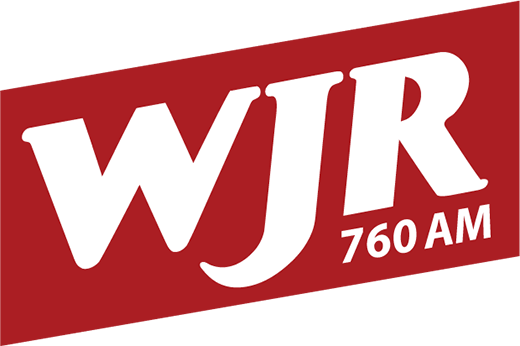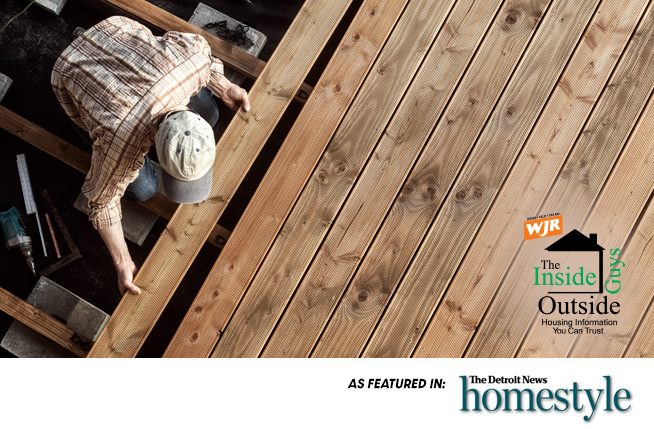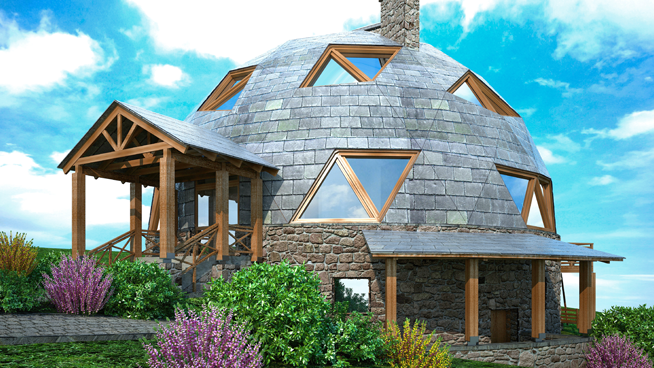By Ken Calverley and Chuck Breidenstein
DETROIT, June 3, 2021 ~ There you are. Sitting in your living room and staring at the four walls, wondering. “Should we build that new sunroom, add that new deck, go ahead with the master bedroom conversion?”
Today’s homeowners, like businesses, more often contemplate return on investment, ROI, as much as any other factor when funding improvements in their homes. The “reward” value of many improvements like that new hot tub or remodeled kitchen oftentimes has to balance out with the perceived increase in value the improvement will attach to the property.
This reasoning can actually hinder an otherwise great decision to modify the home for safety and convenience for an aging parent who doesn’t want to “waste all that money” they would otherwise leave to the kids.
The reality over time is that some improvements do, indeed, lend value to the property while others may actually be seen as a negative for potential buyers.
For instance, appraisers have long conveyed a somewhat negative bias against pools as a value-added improvement in the Midwest. And realtors will tell you that for every one buyer that would love to have a pool,10 others don’t want the responsibility or perceived liability.
The National Remodelers Council and Realtors have for many years tried to quantify this thinking to discover the potential ROI on various home upgrades.
Each year they conduct a survey among both professionals and homebuyers to compare cost of an improvement to the perceived added value of the improvement. This “cost-to-value” survey becomes a topic for discussion a couple times a year with the Guys as listeners try to navigate home improvement decisions.
The premise assumes a sale within a year of making an improvement. If you invest $10,000 in an upgrade, how much more did the home sell for as a result of that improvement?
While not an exacting science, the survey can functionally act as a guidepost for owners considering that next home improvement project. The surveys are conducted in 101 major markets in the U.S. and feature a long list of popular projects, from kitchen and bath upgrades to new roofs. Additionally, the survey categories are broken down into “upscale” vs. “midrange” projects. In this most recent survey a bathroom addition – midrange – cost, on average, $49,598 and “returned” $26,807 or 54% of cost.
A bathroom addition – upscale – cost, on average, $91,287 and “returned” $49,961 or 54.7% of cost.
And all of these projects are subject to the Guys “Wallpaper Rule” that says no matter how much you love that expensive new pink-flocked paper on your dining room walls, a prospective home buyer who hates pink may not be able to see past their dislike when considering the purchase of your home. The same thinking might apply to colored bath fixtures or exotic tile that you love, but a buyer abhors.
In this year’s survey, nine of the top 10 ROI projects were “outside” projects that contributed to curb appeal as well as reduced maintenance, higher energy efficiency, and in some cases, increased security.
New garage doors can bring a high return on investment.
As might be expected, all project costs were higher year-over-year and that trend is expected to continue for the foreseeable future.
The top two were application of manufactured stone veneer with a 95.6% ROI and a garage door replacement with a 94.5% ROI. The average cost of the stone veneer project was $936 while the garage door project averaged $3,695.
Window replacement “vinyl” and window replacement “wood” each returned around 70% of cost as did deck additions.
Exterior siding upgrades returned mid to high 70% of cost while entry door replacements at No. 9 on the list, typically a top ROI project, returned about 70% of cost. The entry door ROI reduction may be due to the fact that this project has become proportionately more expensive in recent years as buyer’s opt for higher end product. Still a great project and still a great return!
If you are upgrading to sell, there are some strategies you can employ to make your home more appealing to a wider range of buyer. “Neutralizing” your home in terms of color and texture is a proven strategy whereby you get rid of most color. In years gone by we would tear out the blue and green and red carpets along with most wallpaper and dark paneling. Everything would be recast in a beige color.
De-cluttering to enhance perception of room sizes and good use of lighting to convey airiness and warmth are also effective strategies.
But at the end of the day, most home improvements are made to enhance your living experience and many improvements will and should be made on the basis of what you want for your home. After all, it is your castle!
If you have concerns about value or priorities, contact any of the professionals at InsideOutsideGuys.com and discuss the possibilities. Tell them we told you to call.
For more home improvement advice, listen to the “Inside Outside Guys” every Saturday and Sunday on News/Talk 760, WJR-AM, from 10 a.m. to noon or contact us at InsideOutsideGuys.com.
***
The “Inside Outside Guys” are published every Saturday in the Homestyle Section of The Detroit News.





